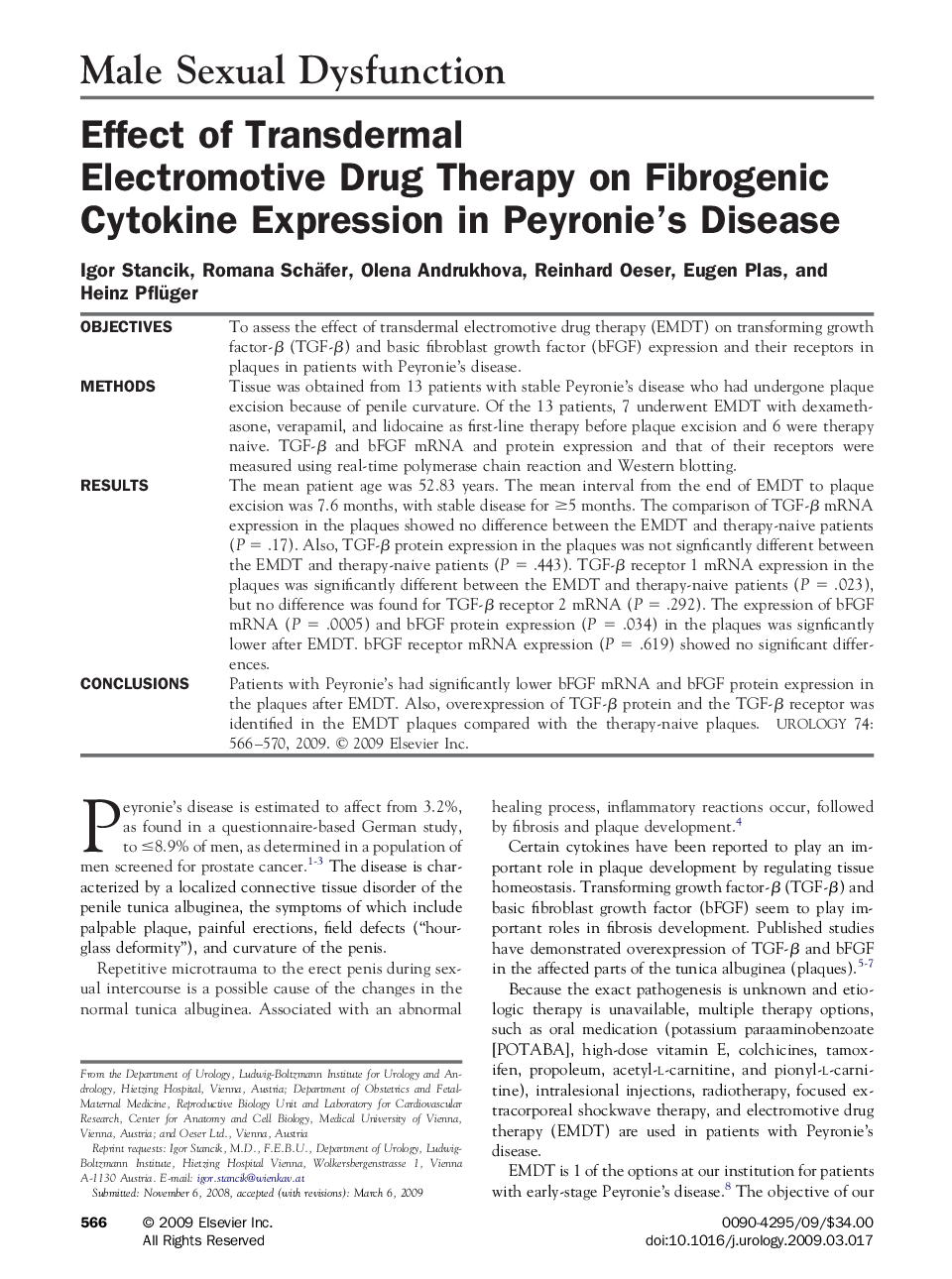| Article ID | Journal | Published Year | Pages | File Type |
|---|---|---|---|---|
| 3904051 | Urology | 2009 | 5 Pages |
ObjectivesTo assess the effect of transdermal electromotive drug therapy (EMDT) on transforming growth factor-β (TGF-β) and basic fibroblast growth factor (bFGF) expression and their receptors in plaques in patients with Peyronie's disease.MethodsTissue was obtained from 13 patients with stable Peyronie's disease who had undergone plaque excision because of penile curvature. Of the 13 patients, 7 underwent EMDT with dexamethasone, verapamil, and lidocaine as first-line therapy before plaque excision and 6 were therapy naive. TGF-β and bFGF mRNA and protein expression and that of their receptors were measured using real-time polymerase chain reaction and Western blotting.ResultsThe mean patient age was 52.83 years. The mean interval from the end of EMDT to plaque excision was 7.6 months, with stable disease for ≥5 months. The comparison of TGF-β mRNA expression in the plaques showed no difference between the EMDT and therapy-naive patients (P = .17). Also, TGF-β protein expression in the plaques was not signficantly different between the EMDT and therapy-naive patients (P = .443). TGF-β receptor 1 mRNA expression in the plaques was significantly different between the EMDT and therapy-naive patients (P = .023), but no difference was found for TGF-β receptor 2 mRNA (P = .292). The expression of bFGF mRNA (P = .0005) and bFGF protein expression (P = .034) in the plaques was signficantly lower after EMDT. bFGF receptor mRNA expression (P = .619) showed no significant differences.ConclusionsPatients with Peyronie's had significantly lower bFGF mRNA and bFGF protein expression in the plaques after EMDT. Also, overexpression of TGF-β protein and the TGF-β receptor was identified in the EMDT plaques compared with the therapy-naive plaques.
